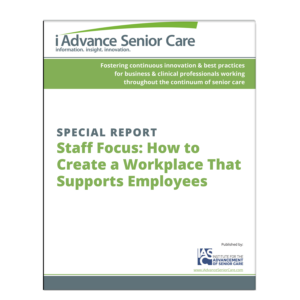Good news, bad news for jobs in long-term care
Several healthcare occupations utilized in long-term care (LTC) settings offer excellent prospects for employment, although the opportunities for certain roles may be better outside of long-term care, according to recently released government data. And wages may or may not be excellent.
New data released Friday (PDF) by the U.S. Bureau of Labor Statistics (BLS) demonstrate that nursing care facilities lost 6,000 jobs in March compared with the previous month, although healthcare jobs in general increased by 22,300, spurred by increased hiring in ambulatory health care (physician offices, outpatient care centers and home health—home health positions increased by 6,000 during the time period) as well as hospitals.
Other government data also indicate that healthcare in general can be a healthy industry with which current and future workers can align themselves.
In a March 25 report on occupational employment and wages for May 2014 issued by the BLS, “registered nurse” (RN) was included on the top 10 list of largest occupations, and it was one of those on the list that had an above-average annual wage ($69,790). By comparison, other occupations on the list had annual wages ranging from $19,110 to $34,500.
Healthcare, social assistance and retail were the industry sectors with the largest employment in the March 25 report. More than half of May 2014 employment in the healthcare and social assistance sector was in healthcare-related occupations. RNs (2.4 million), nursing assistants (1.3 million) and personal care aides (1.2 million) were the largest occupations in the sector.
And Jan. 8 data from the BLS’ Occupational Outlook Handbook predicts that personal care aides, RNs, home health aides, nursing assistants and licensed practical and licensed vocational nurses will be among the occupations with the highest projected numeric change in employment between 2012 and 2022 (see table). Additional data released on the same day predicts that personal care and home health aides,
occupational therapy assistants and aides, physical therapist assistants and aides, and physical therapists will be among the occupations that will have the highest percentage change of employment in that timeframe (see table).
Personal care aides and health aides are on the Working Poor Families Project's list of positions commonly held by workers in low-income families. Personal care aides have a median wage of less than $10 per hour, too low to support a family, the project maintains.
Government efforts
In attempt to address forecast LTC-related labor shortages, 33 members of the U.S. House of Representatives recently signed a letter (PDF) urging the House chair and ranking member of the Appropriations Committee Subcommittee on Labor, Health and Human Services, Education and Related Agencies to provide funding to increase the number of healthcare professionals prepared to care for the growing population of older adults. Specifically, they call for $1.67 billion to support National Institutes on Aging research, $44.7 million in funding for geriatrics education programs, $6.7 million for additional U.S. Health and Human Services workforce programs and $197.5 million for programs that support family caregivers.
The letter was circulated by Rep. Jan Schakowsky (D-IL) and Rep. Doris Matsui (D-CA). The move was applauded by the Eldercare Workforce Alliance, a group of 31 national organizations working to address workforce shortages related to care for older adults.
Schakowsky, with Sen. Sherrod Brown (D-OH) and Sen. Barbara Boxer (D-CA), recently introduced for consideration the National Nursing Shortage Reform and Patient Advocacy Act, which among other things would establish minimum registered nurse-to-patient ratios. It only would apply to hospitals, however.
Related content:
2015 Business Outlook: Staffing
Making direct care more appealing

Lois A. Bowers was senior editor of I Advance Senior Care / Long-Term Living from 2013-2015.
Related Articles
Topics: Articles , Staffing











